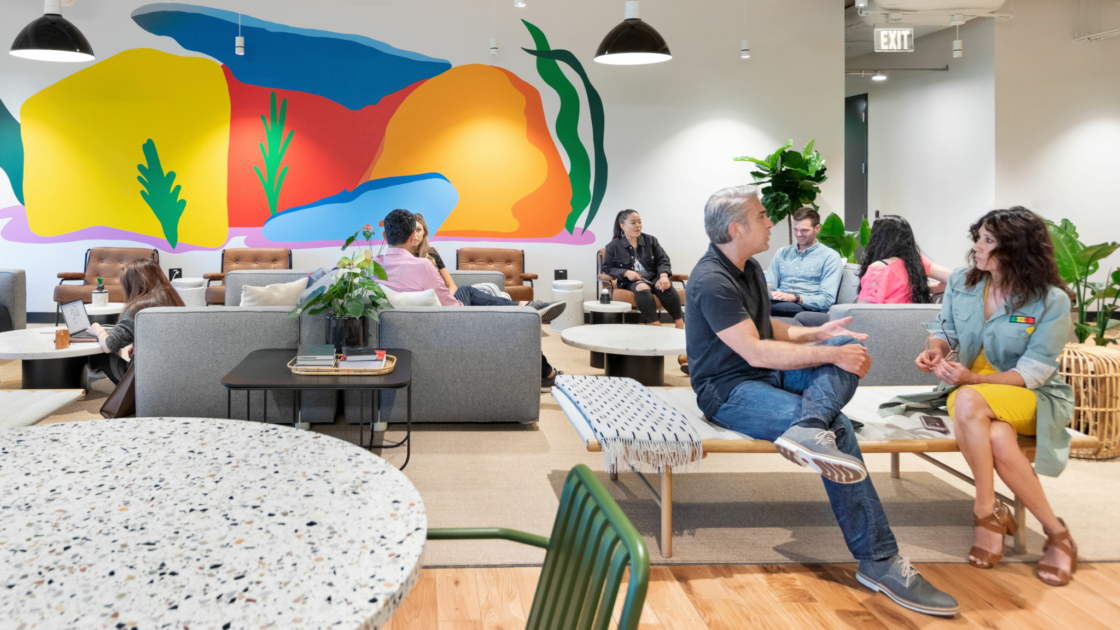The pandemic has created new ways of working, with many multinationals using hybrid working models in ways they would have never imagined prior to the global crisis. As more employees discover a better work-life balance, there is an increasing demand toward keeping flexible work models in place. But will the hybrid workplace remain, or will companies revert back to more traditional work models?
Hybrid work combines remote working and in-office working, where some—or all—employees have the freedom to choose where and when they work, dividing their time between working from home and a central office.
Employers and employees may differ on the number of days that staff should come into the office, and it also depends on the company and its business activities. Companies are offering varying degrees of flexibility and policies to encourage a return to the office. But with more employees than ever considering new opportunities and seeking a better work-life balance, companies will need to adapt to attract and retain their talent.
What employees want
Many employees have struggled to balance the pressures of life and work during the pandemic.
In January 2022, 104 Data invited 2,755 employees and 2,637 employers in Taiwan to express their views on new ways of working. The survey results are illuminating: out of the respondents who have worked from home, 82% agree that these policies can increase employee satisfaction, while 79% indicate that they can increase satisfaction towards the company. In terms of ways of working, however, employers and employees show different opinions. Employers want their staff to come into the office, but employees prefer either hybrid work or working from home. Both sides, however, lean towards working 3 days in the office and 2 days at home.
The study also points to factors that are central to the success of hybrid work and work-from-home policies: flexibility and productivity, a culture of trust, clear business goals, and sufficient and efficient software and hardware.
That said, hybrid and work-from-home roles grew by 4.6 times over the past 3 years but only made up 1.5% of the recruitment market—so new ways of working still have a long way to go in Taiwan.
Though Taiwanese companies have reservations about the new work style, Microsoft has concluded that flexible hybrid work models are here to stay. Over 70 percent of workers want flexible remote work options to continue and 65 percent of workers desire more in-person time with their teams and collaboration in the workplace.
The implications of this show that employee expectations are changing and leaders need to move with the times. According to Microsoft CEO Satya Nadella, “We will need to define productivity much more broadly—inclusive of collaboration, learning, and wellbeing to drive career advancement for every worker, including frontline and knowledge workers, as well as for new graduates and those who are in the workforce today. All this needs to be done with flexibility in when, where, and how people work.”
While working from home presents certain challenges, most employees appreciate the flexibility it offers and prefer not to return to the office full-time so as to enjoy a better work-life balance. The McKinsey survey found that 51 percent of respondents ranked work-life balance as a top priority going forward, even outranking better salaries.
While leadership acknowledges that the future of work is hybrid, they have the difficult task of balancing demands for more remote options with concerns about maintaining productivity, culture and collaboration. They recognize that the freedom to work remotely has a positive impact on well-being but are concerned it can come at a cost.
Potential hybrid work models
What are some of the forms that a potential hybrid work model could take? Here are four of the most common hybrid models companies are implementing:
Some remote options, with a large HQ
This hybrid work model enables employees to work remotely one to three days a week while working the rest of the time in the traditional office headquarters. Given most employees’ preference for at least three days of remote work, this option could make retention difficult.
Some remote options, with multiple office hubs
This option offers one to three days of remote work—but rather than reporting into a large centralized office, employees could perform in-office work throughout a set of smaller regional hubs or satellite offices. This hybrid work model brings offices closer to employees, making commuting easier and creating a wider available talent pool.
Primarily remote with flexible workspace options
This is a primarily remote work model with employees working remotely up to five days a week. But rather than providing assigned desks or office locations, a company offers their staff flexible spaces with hot desks and meeting spaces in select locations for collaboration and focused office work.
Fully remote, no office
This hybrid work model enables a fully remote workforce. It could involve staff located across different locations—even continents and time zones. The benefits of this remote work model include removing barriers to accessing talent despite their location and savings on brick-and-mortar overhead costs. While this model has its benefits, many employees say they would still like the option of touching base at an office for teamwork and socialization.
What does this mean for the future of remote work?
Employers will need to accommodate what employees want and make changes to incorporate a hybrid work model if they want to retain their talent. As the workforce demands more emphasis on worker well-being and better work-life balance, flexibility is necessary. Whether corporations like it or not, it seems hybrid work is here to stay.
Are you considering a hybrid work model and looking for some satellite office spaces? Learn more about our flexible co-working spaces designed to support hybrid workforces at wework.tw .Connect with us today to find out more.
